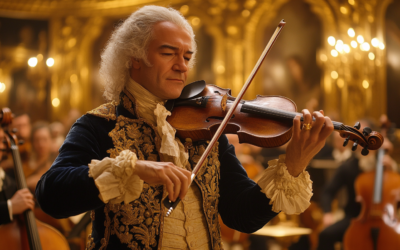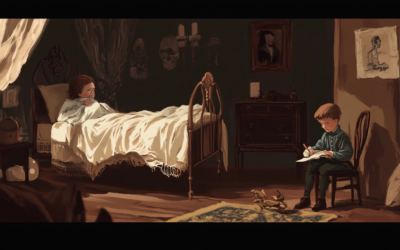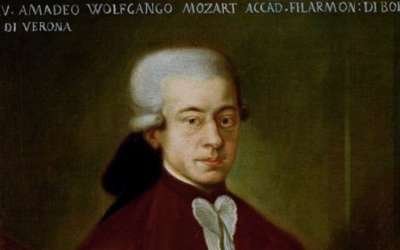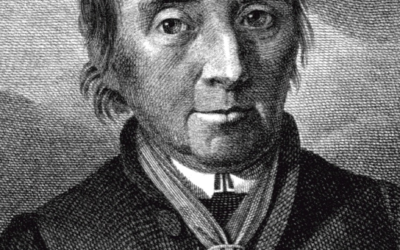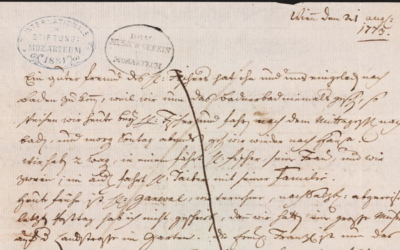The Piano Concertos K.107
Another Example of Borrowed Genius
The myth of Mozart’s genius, which has endured for centuries, begins to crumble when one examines the early concertos such as K.107. Far from being the original works of a prodigy, these pieces are patchworks of existing sonatas by Johann Christian Bach, meticulously reworked and corrected by Leopold Mozart. What is often attributed to Wolfgang’s precocious talent was in fact a collaborative effort where the father’s hand played a dominant role in shaping the final compositions. Despite the romanticised narratives of genius that emerged in the 19th century and were amplified in the 20th century, particularly during the Nazi era, the reality is far less flattering. The so-called brilliance of these early concertos lies not in Mozart’s originality but in Leopold’s ability to plagiarise and repackage the works of other composers, while adding dynamics and fine-tuning his son’s mechanical copying. This fabricated image of the ‘boy genius’ distracts from the truth: that Wolfgang, at the age when others were considered masters, was still dependent on external sources for inspiration and guidance. The concertos of K.107 serve as a reminder that even in his formative years, Mozart’s supposed genius was more a product of his father’s ambition and craft than his own creative spark.
Mozart: The Fall of the Gods
This book compiles the results of our studies on 18th-century music and Mozart, who has been revered for over two centuries as a deity. We dismantle the baseless cult of Mozart and strip away the clichés that falsely present him as a natural genius, revealing the contradictions in conventional biographies. In this work, divided into two parts, we identify and critically analyze several contradictory points in the vast Mozart bibliography. Each of the nearly 2,000 citations is meticulously sourced, allowing readers to verify the findings. This critical biography of Mozart emerges from these premises, addressing the numerous doubts raised by researchers.
"These concertos, credited to Wolfgang, lack the originality one would expect from a young prodigy. Instead, they reveal the extent of Leopold’s influence, shaping his son’s career while orchestrating a façade of brilliance built on borrowed ideas."
Mozart: The Fall of the Gods
In the collective imagination, supported by decades of musicological research, certain myths are hard to dispel. One such persistent belief is that of Mozart as a genius and child prodigy, composing piano concertos at an incredibly young age. A popular anecdote, mistaken by many musicologists for historical fact, recounts the story of Mozart’s first attempts to write a piano concerto. Finding it too difficult to perform, he could barely play it himself and had to settle for giving only a vague idea of it on the harpsichord:
One day, as Leopold returned from church with a friend, he found his son busy writing. “What are you doing, my dear?” he asked. “I’m composing a concerto for the harpsichord, and I’ve almost finished the first part,” Wolfgang replied. “Let’s see this scribble,” Leopold said, taking the paper. The two friends laughed at the chaotic mess of notes that were barely decipherable under the ink smudges. But upon closer inspection, Leopold remarked, “Your composition is according to the rules, but it’s unplayable. Who could possibly perform it?” “But it’s a concerto,” the young Mozart protested, “and one must practice until it can be played well.” He then sat at the harpsichord and played just enough to show what he had in mind.
This charming story, passed down through Schlichtegroll and embellished by countless sources, has been accepted as fact. Meanwhile, Leopold’s catalogue, as updated by Constanze’s second husband, Nissen, included four piano concertos allegedly composed by Wolfgang in 1767. These manuscripts, preserved by the publisher André, were believed to be authentic. Thus, the anecdote solidified the image of the boy prodigy, capable at just eleven years old of writing complex piano and orchestral works. These piano concertos—K.37, K.39, K.40, and K.41—are still performed today as if they were Mozart’s original creations, demonstrating the early precocity of the young composer.
But here lies the deception.
In reality, these concertos are “pasticcio” works—compositions created by stitching together movements from sonatas for solo instrument written by fashionable composers of the time, including Hermann Raupach, Leontzi Honauer, Johann Schobert, Johann Eckard, and C.P.E. Bach. According to musicologist Wolfgang Plath, Leopold’s involvement in these concertos was extensive, if not predominant.
Ludwig von Köchel, who catalogued these works in the Köchel-Verzeichnis, was an eclectic figure, more versed in law, botany, and geology than in music. His 1862 Chronological and Thematic Catalogue of Mozart’s Works, still regarded as reliable by many publishers and record labels, included these concertos under Mozart’s name. But Köchel’s lack of musical training led to several mistakes in the cataloguing process, with these pasticcio concertos slipping through the cracks.
Let’s take a closer look at these concertos, beginning with K.37 in F major:
- The first movement (Allegro) is borrowed from Hermann Raupach’s Sonata No. 5.
- The second movement (Andante) is attributed to either an anonymous composer or Johann Schobert.
- The third movement (Allegro) is taken from Leontzi Honauer’s Sonata No. 3.
Similarly, the other concertos follow this pattern. K.39, K.40, and K.41 are also constructed from movements lifted from various sonatas by Raupach, Honauer, Schobert, Eckard, and C.P.E. Bach, composers well-known during Mozart’s childhood but now almost forgotten. These works were not original creations but were heavily arranged and revised by Leopold, prepared for a planned trip to Vienna.
Leopold’s shrewdness lay in selecting compositions obscure enough that no one in Salzburg would recognise them. These sonatas were taken from German composers who primarily worked abroad, making it easy for Leopold to pass them off as his son’s work. Though Wolfgang’s name appeared on concert posters and programs, the names of Raupach, Schobert, Honauer, and Eckard were nowhere to be found.
Mozart completed these four concertos in about two months—far too short a time to create entirely new works but reasonable for copying or rearranging existing music. Despite this, the myth of Mozart as a precocious genius continued to grow, with stories such as the one recounted above perpetuating his legend. Yet the truth is that these early concertos were little more than skilful adaptations of others’ works, a far cry from the original compositions expected from a prodigy.
You May Also Like
The Violin Concertos: Mozart’s Borrowed Genius
Mozart’s violin concertos are often celebrated as masterpieces, but how much of the music is truly his? This article delves into the complexities behind the compositions and challenges the authenticity of some of his most famous works, revealing a story of influence, imitation, and misattribution.
#2 The Hidden Truth of Mozart’s Education
In this video, we uncover the hidden truth behind Wolfgang Amadeus Mozart’s early education and challenge the long-held belief in his effortless genius. While history often celebrates Mozart as a child prodigy, effortlessly composing music from a young age, the reality is far more complex.
The London Notebook
The London Notebook exposes the limitations of young Mozart’s compositional skills and questions the myth of his early genius. His simplistic pieces, fraught with errors, reveal a child still grappling with fundamental musical concepts.
The Mozart Question
In this revealing interview, we delve into the lesser-known aspects of Wolfgang Amadeus Mozart’s life, challenging the long-standing myth of his genius. A Swedish journalist explores how Mozart’s legacy has been shaped and manipulated over time, shedding light on the crucial role played by his father, Leopold, in crafting the career of the famed composer.
Georg Nissen and the Missing Notebooks
After Mozart's death, his widow, Constanze, found a steadfast partner in Georg Nikolaus von Nissen, a Danish diplomat who dedicated his life to preserving the composer's legacy. Nissen not only compiled an extensive biography of Mozart but also uncovered and...
Letters Under Surveillance
In a world without privacy, Leopold Mozart’s letters were carefully crafted not just to inform but to manipulate perceptions. His correspondence reveals a calculated effort to elevate his family’s status while avoiding any mention of failure or controversy.


